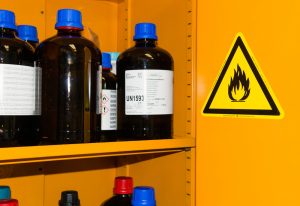Changes to California’s Proposition 65 (Prop 65) short-form warning label regulations are expected soon. Once adopted, impacted industry will have one year to comply with the amendments.
Prop 65 requires warning labels to be placed on products sold in California that expose consumers to chemicals known to cause cancer or reproductive or developmental toxicity.
The state publishes a list of chemicals that require warning labels. The list currently contains approximately 900 chemicals and is periodically updated. It also contains a “safe harbor level” for these chemicals, meaning a product containing lower levels than the published safe harbor level is not required to provide the warning label.
Exposure to these chemicals can occur in a variety of settings, including the consumption of food and beverages and product, environmental, and occupational exposure. Because the range of potential exposures is so varied, virtually any company selling products in California must comply with Prop 65 regulations.
Penalties are steep—up to $2,500 per day per violation.
Prop 65 is regulated by California’s Office of Environmental Health Hazard Assessment (OEHHA). The office added the option for short-form warnings in 2016—an option industry found attractive because it:
- Did not require specific identification of one of 900 listed chemicals, and
- Provided some protection for companies from potential litigation without having to name a specific chemical exposure.
“After OEHHA adopted the Article 6 regulations in August 2016, OEHHA discovered that many businesses were using the short-form warning for all kinds of consumer products, regardless of product size,” states the OEHHA in its proposed Article 6 amendments document. “OEHHA also did not anticipate the widespread use of short-form warnings for food products but received numerous inquiries from businesses seeking clarification as to how and whether the short-form warning could be used as a safe harbor warning for food products. Further, OEHHA determined that many businesses are using the short-form warning because it protects them from potential litigation without requiring them to name a specific chemical exposure. As a result, these businesses likely have provided warnings for exposures that do not or cannot occur from use of their products.”
The proposed amendments would make the following modifications to short-form warning provisions:
- Only allow use of the short-form warning on products with 5 square inches or less of label space.
- Eliminate use of short-form warnings for Internet and catalog warnings.
- Clarify how short-form warnings can be used for food products.
- Require that the name of at least one chemical be included in the short-form warning.
In addition to the one-year phase-in period for existing products, the proposed amendments also allow industry “an unlimited sell-through period for products that had compliant warnings when they were manufactured,” which will eliminate recall costs for these products.

